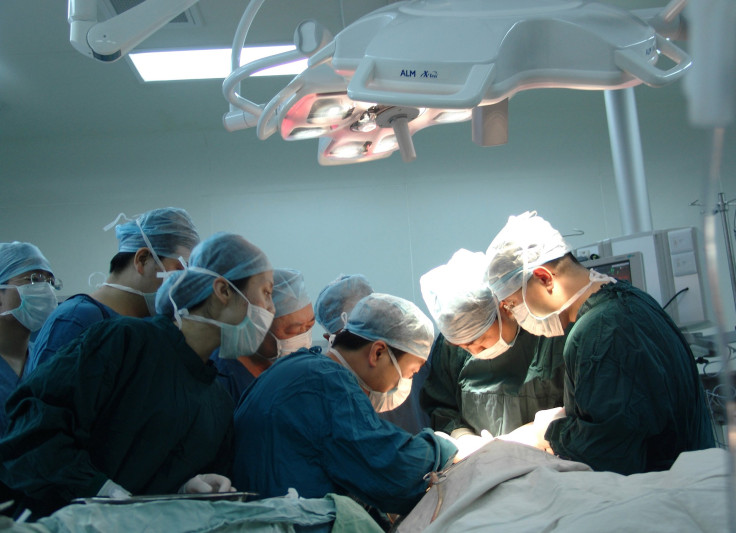Katie Stubblefield Facts: 21-Year-Old Woman Becomes Youngest Face Transplant Patient In US

A 21-year-old woman, who shot herself in a failed suicide bid, became the youngest person in the U.S. to receive a face transplant after the incident left her heavily disfigured. Katie Stubblefield is featured on the cover of National Geographic magazine's September issue, released Tuesday, in a piece titled "The Story of a Face."
Stubblefield shot herself with a .308-caliber hunting rifle in a bathroom of her Mississippi home in March 2014 after she found out her then-boyfriend was texting another girl. Her older brother, Robert, was the one who found her covered in blood on the day of the incident.
“Her face is gone,” he recalled thinking at the time.
Stubblefield, who was 18 at the time, was critically injured, having lost her forehead, nose, sinuses, and her mouth except the corners of her lips. Her eyes were also badly damaged.
Cleveland Clinic's Dr. Brian Gastman told National Geographic that Stubblefield's injury was one of the worst face traumas he had ever seen.
"Her brain was basically exposed, and I mean, we're talking seizures and infections and all kinds of problems. Forget the face transplant; we're talking about just being alive," he said.
Stubblefield told National Geographic that she has no memory of her suicide attempt.
“I had never thought of doing that before,” Stubblefield reportedly said, adding that afterward, “I felt so guilty that I had put my family through such pain. I felt horrible.”
“I had no clue what a face transplant was,” she also told CNN. “When my parents helped explain everything to me, I was very excited to get a face again and to have function again.”
Stubblefield received the rare 31-hour transplant after being on the transplant list for over a year before Andrea Schneider, a 31-year-old woman and organ donor who had recently died, turned out to be a match.
"Life is amazing. Life is an amazing gift" -Katie Stubblefield
— aveey (@wavwithaveey) August 14, 2018
At 18, She Survived a Suicide Attempt. Hear What She Has to Say. https://t.co/CwGImIhIRo
The surgery was performed at the Cleveland Clinic in Ohio in May and paid for by the U.S. Department of Defense through the Armed Forces Institute of Regenerative Medicine.
The experimental and extensive surgery, which is only the 40th known procedure of its kind in the world, involved replacing Stubblefield's full facial tissue - transplanting the scalp, forehead, upper and lower eyelids, eye sockets, nose, upper cheeks, upper jaw and half of lower jaw, upper teeth, lower teeth, partial facial nerves, muscles and skin.
The transplant was performed by 11 surgeons to help Stubblefield's face carry out functions such as chewing, breathing and swallowing.
“I am able to touch my face now, and it feels amazing,” Stubblefield, who still had some difficulty speaking, said. “I’m definitely taking many, many daily steps,” she added about the recovery process.
© Copyright IBTimes 2024. All rights reserved.




















